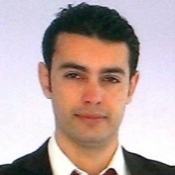
Abtoy Anouar
Work place: Computer Engineering Department, National School of Applied Sciences of Tetuan, Tetuan, Morocco
E-mail: anouar.abtoy@gmail.com
Website:
Research Interests: Computer systems and computational processes, Computer Architecture and Organization, Computer Networks, Multimedia Information System
Biography
Anouar Abtoy obtained the master degree in electronics and telematics in 2008 from Abdelmalek Essaädi University (UAE) in Morocco and the PhD degree in Computer Sciences from the same university UAE in 2012. Currently he is professor at the National School of Applied Sciences in the UAE, he is specialized in Computer Sciences and Computer Networks Engineering and a full member of the Computer Sciences Engineering department.
His research interests include web 2.0, WoT, IoT, and wireless sensor network. He authored and co-authored multiple research papers in various fields. He has been chair of multiple international conference tracks related to Information System Engineering and Computer Networks. He is a full member in the Systems Modeling and Information Technology research team, and visiting researcher at the System and Engineering Software research team. He is also a member of the ISOC.
Author Articles
A Context-aware Reference Architecture for Ambient Assisted Living Information Systems
By El murabet Amina Abtoy Anouar Tahiri Abderahim
DOI: https://doi.org/10.5815/ijitcs.2019.02.02, Pub. Date: 8 Feb. 2019
AAL (Ambient Assisted Living) existing architectures lack the sense of abstraction. The overall existing designs propose a set of elements combined with specific technologies. These visions of AAL systems narrows the possibilities and the choices ahead of the engineers and strict the range of using new technologies, which are likely to be easier and affordable. In this paper, we propose a context-aware RA (Reference Architecture) suitable for the design of distributed AAL systems. Our design is standardized and technology independent. Our aim is to provide a common background for developers and deployers to achieve a common understanding while designing the systems. The major gain is to reduce the efforts made while integrating several systems into one complete and stable environment. Ignoring all the specifications, the details and the objectives of the systems, we introduce the standard qualifications, practices and experiences that assimilate the core of every AAL oriented system. Our perception is global, unified and standard. In addition, it presents an infrastructure that would survive the evolution of technologies. It is adjustable and adaptable to the different possibilities of AAL applications.
[...] Read more.Other Articles
Subscribe to receive issue release notifications and newsletters from MECS Press journals